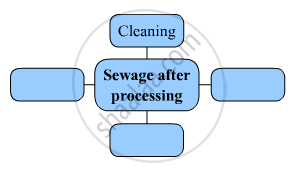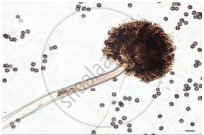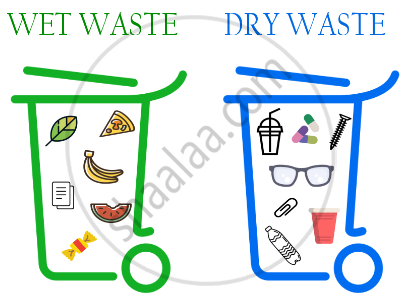Advertisements
Advertisements
प्रश्न
Write a short note.
Bio-fuels
उत्तर
- Plants produce biomass by the process of photosynthesis in which solar energy is used to prepare carbohydrates and oxygen.
- Biomass includes forest residues, crop residues, etc.
- For production of biofuel, biomass is harvested and transported for threshing. The residue left after threshing contains cellulose, which is later on converted to glucose.
- The glucose is then converted to liquid fuel through fermentation, which is used for different purposes.
- Biofuels are renewable sources of energy.
- They are available in solid (dung, crop residue), liquid (vegetable oils, alcohol) and gaseous (gobar gas) forms.
- Biofuels are easily available in sufficient amounts.
- They are reliable fuels of the future.
APPEARS IN
संबंधित प्रश्न
The process of conversion of sugar into alcohol is called ___________.
How can the soil polluted by acid rain be made fertile again?
Complete the following conceptual picture.
Complete the following conceptual picture related to environmental management.
Salts which can be used as supplement of calcium and iron are obtained from ______ acid.
Give reasons.
Fodder is soaked in water before offering to cattle.
____________ acid is used in the production of vitamins.
A clean (smokeless) fuel.
Write a short note.
Probiotics
Which fuels do we get from microbes?
What is the importance of probiotics to humans?
Briefly explain the environmental role of microorganisms in pollution control?
Observe the figure and write the answers to the questions asked.

- Write the name of the fungus in the figure above.
- What is the source of these fungi?
- Which organic acid obtained from this organism is used in commercial production?
Read the following paragraph and write the answers to the questions asked.
Sulphuric acid is present in the acid rain and materials coming out of mines. You know that erosion of metals present in statues, bridges and buildings occurs due to it. Sulphuric acid is a source of energy for some species of bacteria like Acidiphilium spp. and Acidithiobacillus ferrooxidans. Hence, these bacteria can control the soil pollution occurring due to acid rain. Water soluble salts of uranium are present in the wastes produced during electroplating and in effluent released in the environment from the atomic energy plant. Geobacter convert these salts of uranium into insoluble salts and thereby prevent those salts from mixing with groundwater sources.
- What causes metal erosion in statues, bridges and buildings?
- Sulphuric acid is the source of energy for which bacteria?
- What kind of pollution do these bacteria control?
- What are the water soluble salts in atomic energy plants and in the process of electroplating?
- Which bacteria prevent these salts from mixing with ground water by converting them Into insoluble salts?
Write the answers to the questions by observing the figure.

- What type of fuel production process is shown in the figure?
- Write two examples of each of the solid, liquid and gaseous fuels produced in this fuel production process?
- How do microorganisms play their role in this process?
Match the following
| i. | Probiotic | a. | Kuru |
| ii. | Preservation | b. | Methanogen |
| iii. | Prion | c. | Curd |
| iv. | Biogas | d. | Sugar |
Which substance is used to produce cheese?
The figure below shows a concept of segregation, observe the following figure and answer the questions that follow:
- What is dry and wet waste?
- Why do we need to segregate our garbage?

